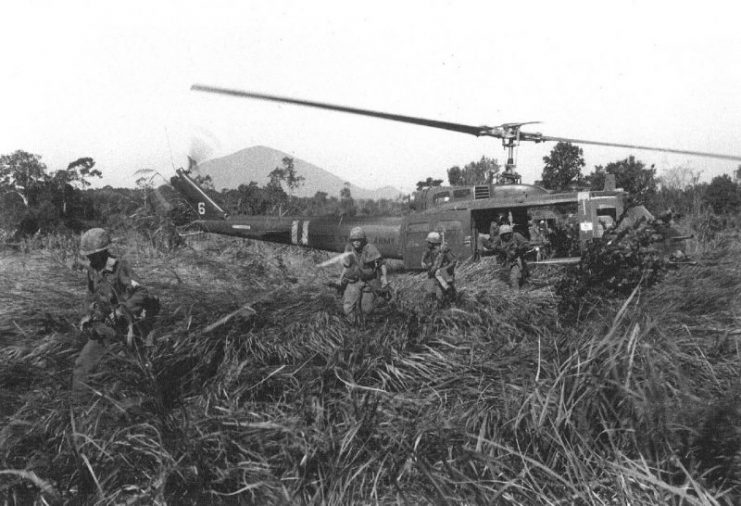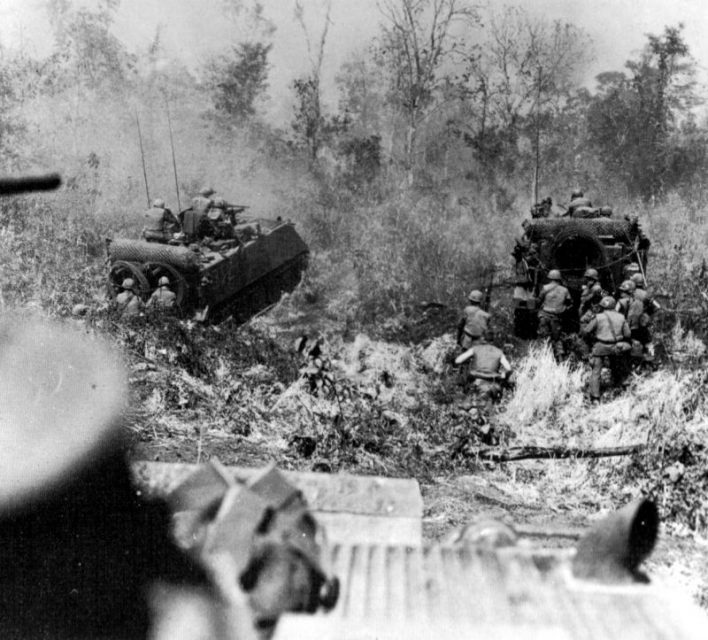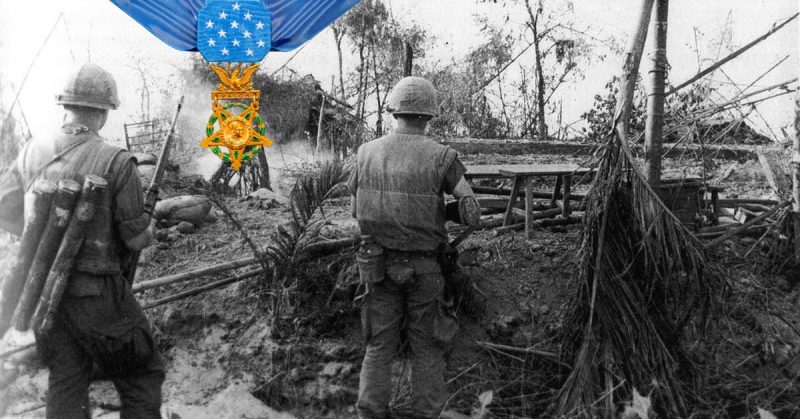Perhaps due to his name – part James Bond and part Man of Steel – it became apparent very quickly that Staff Sergeant James Bondsteel was the type of man you wanted on your side during a fight.
Serving as a platoon sergeant for Company A, 2nd Battalion, 2nd Infantry Regiment, Bondsteel was rallying his men for action after a series of previous engagements that week. A nearby recon platoon had stumbled across an entrenched NVA battalion, and Company A got the call to move in.
Bondsteel took stock of the gravity of the situation. The recon platoon was getting hit hard and was on the brink of faltering. He moved his men into position and began the assault. Containing men from multiple platoons against a more substantial enemy force, Bondsteel opted to lead from the front. Charging into one enemy bunker after another with grenades and his M-16, Bondsteel was individually responsible for clearing ten enemy fortified positions. Refusing assistance for his wounds when a fragmentation grenade went off in his face, he continued to fight for over four hours until relieved by another company. When he emerged with his men from A Company after the fight of their lives, James Bondsteel was the newest recipient of the nation’s highest military honor.

From Marine to Army Legend
James Bondsteel was born in 1947 in Jackson, Michigan. After graduating from high school, Bondsteel opted to serve in the US Marine Corps in 1965. The war in Vietnam was winding up, and Bondsteel was sent to Korea. There he was known for his work in supporting an orphanage during his peacetime deployment, showing a gentler side to this gallant warrior.
When his time in the Marine Corps was up, he decided a career in the US Army was in order. In 1969 he joined the 2nd Battalion, 2nd Infantry Regiment. During his time in Vietnam, he had picked up the nickname “Buddha” due to his tall stature and large torso.
Again showing another side to his character, Bondsteel had learned the local language and could speak Vietnamese – even recognizing the differences between various regional dialects. Despite this gentler side, it was his warrior spirit that earned then Staff Sergeant James Leroy Bondsteel his place in military history.
On May 23, 1969, Bondsteel and the men of A Company had engaged in a firefight where they took control of a large cache of enemy ammunition and weapons indicating a heavy enemy presence in the area. They headed back to a nearby US outpost to refuel their Armored Personnel Carriers and regroup for the night. The next morning they were preparing to go back to the same area when they got the call that forever changed the life and history of James Bondsteel.
The One Man Bunker Buster
The call came on May 24 that a recon platoon had stumbled across a massive force and was under heavy fire and had casualties. The enemy force as it turned out happened to be an entire NVA Battalion entrenched in a system of bunkers with an estimated strength of over 600 to 800 soldiers. SSGT Bondsteel and A Company headed towards the small hamlet of Lang Sau. When they arrived they found the reconnaissance platoon under a storm of fire and in desperate need of help.
Immediately organizing the assault and dividing his men into combat teams, Bondsteel jumped straight into the action destroying four enemy bunkers. While his men provided covering fire, he led the charge, throwing grenades into the opening of the bunker and then thrusting himself in firing with his rifle. He then proceeded to the next bunker, repeating his actions. The result was many dead enemies, conquered bunkers and US soldiers inspired by the gallantry of their leader.
When another platoon nearby began to falter, Bondsteel raced some 200 meters across the fire-swept terrain to organize those men back into a sustainable defense. He then jumped back into his role as a one-man bunker buster. While taking out two more bunkers, he came face to face with an enemy soldier attempting to drop a grenade. Bondsteel was able to wrestle free just in time to pull back and save his own life despite receiving multiple fragmentation wounds to his face and chest. Undeterred, Bondsteel resumed the charge.

A Gallant Stand
While busting the bunkers, Bondsteel also found the time to rescue a severely wounded officer who was engaged in hand-to-hand combat with the enemy. Bondsteel showed up, dispatched the enemy and directed the officer to medical assistance before resuming the fight. After four hours of intense fighting, Bondsteel was responsible for the destruction of ten enemy bunkers and killing many of the numerically superior enemy.
The men of A Company were finally relieved from the fight and able to take stock of their losses. They had suffered over 40 wounded and ten killed during their courageous stand. For Staff Sergeant James Bondsteel his actions led to the nation’s highest military honor. In 1973, James Bondsteel was presented with the Medal of Honor from President Richard Nixon.
James Bondsteel continued his 20-year career in the military before retiring at the rank of Master Sergeant. Following his gentle side, he spent time after his service as a Veteran’s counselor for the VA.
Despite the best efforts of an entire NVA battalion to kill James Bondsteel, it was a tragic accident with a logging truck in Alaska that ended this gallant warrior’s life. James Bondsteel earned his reputation as both a gentle and violent soul, and as a result, will forever hold his place in the halls of US military history as an example of inexplicable gallantry.
